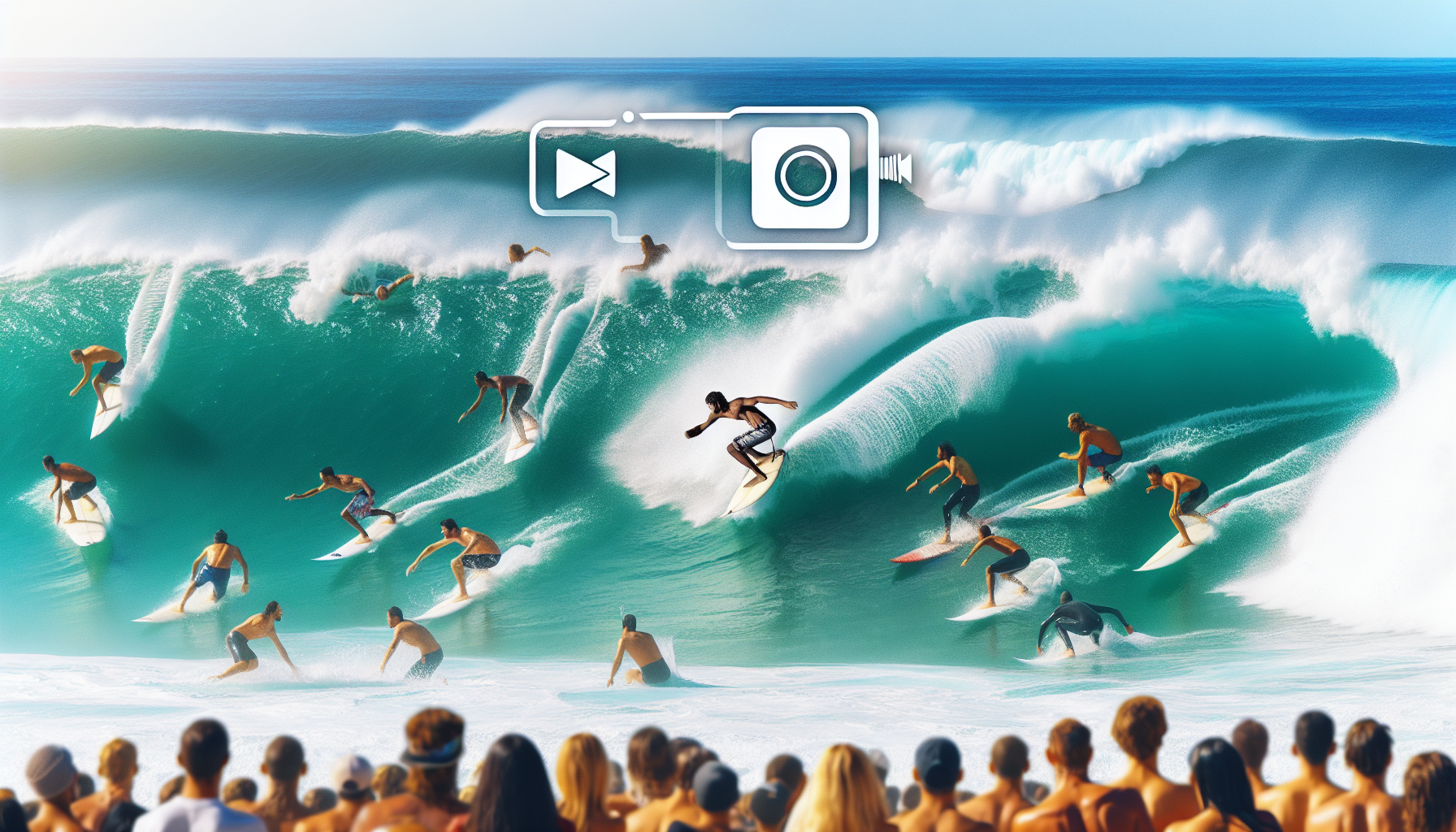
Rising tensions among local and visiting surfers
As the North Shore’s winter swell season reached its peak, the atmosphere at Pipeline grew increasingly tense. Local surfers, many of whom have spent years honing their skills on this treacherous wave, expressed growing frustration over the influx of visiting surfers. These visitors, drawn by Pipeline’s global reputation and the allure of social media exposure, often arrive with little understanding of the unspoken rules and etiquette that govern the lineup.
Longtime North Shore residents have voiced concerns that the traditional pecking order — a system built on respect, experience, and local knowledge — is being eroded. With more surfers paddling out than ever before, many locals feel their safety and wave count are being compromised by less experienced or overly aggressive visitors. The result has been a noticeable rise in verbal confrontations, dropped-in waves, and even physical altercations in the water.
“It’s not just about catching waves,” said one Hawaiian surfer. “It’s about respecting the culture, the people, and the history of this place. Too many are showing up with no clue and no respect.”
Social media has played a significant role in fuelling the tensions. With influencers and vloggers broadcasting their Pipeline sessions to global audiences, the wave has become a bucket-list destination for surfers of all levels. This has led to a perception among locals that the sacred nature of the break is being commercialised and exploited, further deepening the divide between residents and tourists.
Australian surfers, who have long shared a deep connection with Hawaii’s surf culture, are not immune to the scrutiny. While many Aussies are respected in the lineup for their skill and understanding of local customs, others have been caught in the crossfire of rising tensions. The challenge lies in balancing the desire to surf one of the world’s most iconic waves with the responsibility of doing so respectfully and safely.
The impact of overcrowding on safety and performance
As the number of surfers at Pipeline continues to swell each winter, the consequences of overcrowding are becoming increasingly evident in both safety and performance. With dozens of surfers vying for position in a tight takeoff zone, the margin for error has shrunk dramatically. Pipeline is already notorious for its shallow reef, unpredictable sections, and heavy barrels — factors that demand absolute precision and focus. Add a congested lineup into the mix, and the risks multiply exponentially.
Collisions have become more frequent, with boards and bodies clashing in the scramble for priority. Even experienced surfers are finding it difficult to navigate the chaos, often pulling back from waves they might otherwise commit to, simply to avoid potential injury. For less experienced surfers, the danger is even greater. Many underestimate the power and complexity of Pipeline, and in crowded conditions, a single mistake can have serious consequences not just for themselves, but for everyone around them.
“It’s like playing chicken with ten people at once,” said one Australian pro who frequents the North Shore. “You’ve got to be hyper-aware of everyone around you, and sometimes that means missing the best waves of the day just to stay safe.”
Performance-wise, the overcrowding has led to a noticeable decline in the quality of surfing on display. With so many surfers paddling for the same wave, clean, uninterrupted rides are becoming rare. Surfers are often forced to take off deeper or later than they’d prefer, leading to more wipeouts and fewer completed rides. The constant jostling for position also disrupts the natural rhythm of the lineup, making it harder for surfers to read the sets and time their takeoffs effectively.
For competitive surfers, including many Australians who travel to Hawaii each year to train and film, the crowded conditions can be particularly frustrating. Pipeline has long been a proving ground for elite-level performance, but when the lineup resembles a mosh pit, even the best surfers struggle to showcase their full potential. This has led some to seek out alternative breaks nearby, though few offer the same calibre of wave or prestige.
Ultimately, the overcrowding at Pipeline is not just a logistical issue — it’s a threat to the very essence of what makes the wave so revered. The combination of danger, beauty, and performance potential is what draws surfers from around the world, but without a more manageable lineup, that magic is at risk of being lost beneath the surface of chaos.
Potential solutions to manage Pipeline’s popularity
In response to the growing concerns surrounding Pipeline’s overcrowding, a number of potential solutions have been proposed by members of the surfing community, local authorities, and surf organisations. While none offer a perfect fix, each aims to strike a balance between preserving the wave’s cultural significance, ensuring safety, and maintaining access for surfers from around the world.
One of the most widely discussed ideas is the implementation of a permit or registration system during peak swell periods. Similar to what’s been trialled at other high-traffic surf spots globally, this approach would limit the number of surfers allowed in the water at any given time. While some argue this could help restore order and reduce the risk of injury, others worry it may favour elite or well-connected surfers, further marginalising locals and travelling surfers without sponsorship or industry ties.
Another suggestion gaining traction is the introduction of designated time slots or priority windows for different groups — such as locals, professionals, and visiting surfers. This could be managed through collaboration between local surf clubs, the city council, and the World Surf League. While logistically complex, it could help ensure that those with deep ties to the break are given the respect and space they deserve, while still allowing others to experience Pipeline under safer, more controlled conditions.
Education also plays a critical role in any long-term solution. Many believe that a stronger emphasis on surf etiquette and local customs — particularly for first-time visitors — could go a long way in easing tensions. This might include mandatory orientation sessions for visiting surfers, signage at key access points, or even digital resources promoted through surf travel agencies and social media platforms. For Australian surfers heading to Hawaii, understanding and respecting the cultural protocols of the North Shore is essential not just for safety, but for maintaining the strong trans-Pacific ties that have long existed between the two surf communities.
“Pipeline isn’t just a wave — it’s a sacred place with a deep history,” said a Hawaiian surf elder. “If you want to surf here, you need to know what it means to the people who live here.”
Some locals have also called for increased enforcement of existing rules, such as those related to surf schools and commercial filming. By limiting the number of commercial operations allowed in the lineup, authorities could reduce the volume of inexperienced surfers and media crews competing for waves. This would not only improve safety but also help preserve the integrity of the break for those who treat it with the reverence it deserves.
Ultimately, any solution will require cooperation between locals, visiting surfers, and governing bodies. For Australian surfers, many of whom have earned respect in Hawaiian lineups through decades of mutual exchange and shared passion, the challenge is to lead by example — showing that it’s possible to chase world-class waves while still honouring the traditions and people that make places like Pipeline so special.
Rising tensions among local surfers
Mate, this past winter at Pipeline was more packed than a Bunnings sausage sizzle on a Saturday. Local surfers, who’ve spent years earning their stripes on the North Shore, were fuming as the lineup turned into a full-blown circus. With every swell, it felt like half the planet had paddled out — influencers, vloggers, weekend warriors — all jostling for a piece of the action.
The tension wasn’t just in the water — it was in the carparks, the trails, even the lineup chatter. You could cut the vibe with a fin. Longtime locals, some of whom have risked life and limb at Pipe for decades, were getting snaked left and right. Respect, which used to be the currency out there, seemed to be in short supply.
“It’s not just about catching waves — it’s about knowing the pecking order, respecting the locals, and understanding the danger,” one North Shore charger said. “Now it’s like everyone thinks they’re in a GoPro commercial.”
There were more than a few heated exchanges, and not just the usual splash-and-paddle. Boards were snapped, words were had, and the vibe turned sour. For Aussie surfers used to a bit of banter and a fair go in the lineup, it’s a stark reminder that at Pipe, it’s not just the wave that’ll bite you — it’s the crowd too.
Impact of overcrowding on safety and performance
When Pipeline gets crowded, it’s not just the vibe that suffers — it’s the safety, mate. We’re talking about one of the heaviest waves on the planet, where a split-second mistake can mean a trip to the ER or worse. With dozens of surfers jostling for position on a single peak, it’s become a full-contact sport out there, and not in a good way.
More bodies in the water means more drop-ins, more collisions, and way more chaos. You’ve got beginners paddling into sets they’ve got no business being near, and seasoned pros pulling back because they don’t want to mow someone down. It’s like trying to thread a needle while dodging shopping trolleys in a cyclone.
“I’ve surfed Pipe for 15 years, and this winter was the sketchiest I’ve ever seen,” said one Aussie expat living on the North Shore. “You’re not just reading the wave anymore — you’re reading the crowd, and that’s when mistakes happen.”
Performance has taken a hit too. With so many people in the lineup, even the best surfers are struggling to find clean waves. You can’t push the limits when you’re constantly looking over your shoulder. And let’s be honest — Pipe isn’t the place to be second-guessing your line because someone’s paddling up the face with a selfie stick.
- More injuries reported this season than in previous years, many due to collisions.
- Top-tier surfers opting to sit out sessions due to unsafe conditions.
- Wave quality wasted as sets go unridden or get blown by interference.
For Aussie surfers dreaming of a Pipe session, it’s a wake-up call. The wave’s still all-time, but the crowd? That’s a whole new beast. You’ve got to bring more than just your board — you need patience, awareness, and maybe a bit of luck to snag a clean one without copping a fin to the head.

